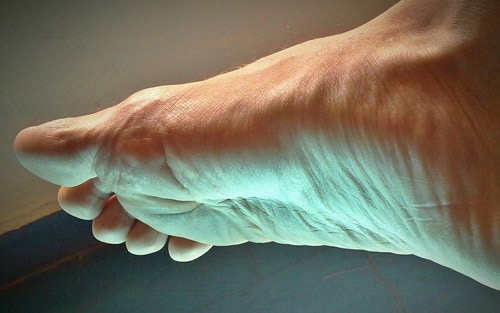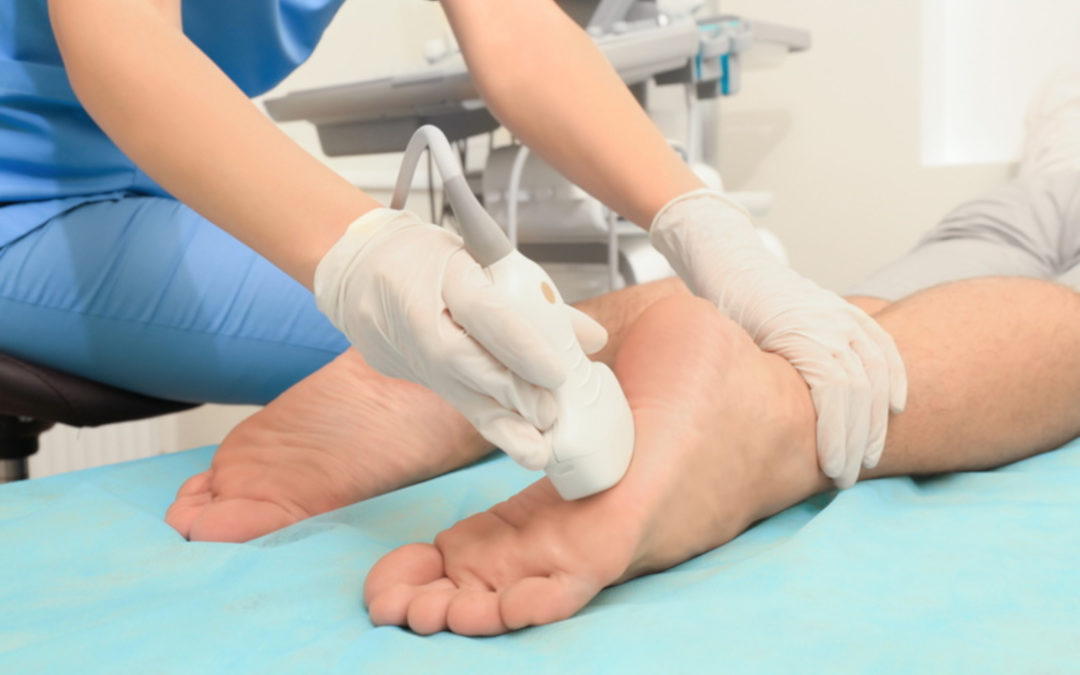Three common foot problems are bunions, plantar fasciitis, and ingrown toenails. Bunions are bony bumps that form at the base of the big toe joint, causing pain and difficulty walking.
Plantar fasciitis is inflammation of the band of tissue connecting the heel bone to the toes, resulting in heel pain. Ingrown toenails occur when the edge of a toenail grows into the surrounding skin, leading to pain, redness, and infection.
These foot problems can be caused by a variety of factors, including genetics, improper footwear, and trauma. It is important to address these issues promptly to prevent further complications and maintain overall foot health. Proper foot care, such as wearing comfortable shoes, practicing good hygiene, and seeking medical attention when needed, can help alleviate and prevent these common foot problems.
Common Foot Problems
Three common foot problems include plantar fasciitis, bunions, and ingrown toenails. Plantar fasciitis causes heel pain, while bunions can lead to discomfort and deformities in the joint of the big toe. Ingrown toenails occur when the edge of the nail grows into the skin, causing pain and inflammation.
Bunions
Bunions are a common foot problem that can cause significant discomfort and pain. They are bony bumps that form at the base of the big toe, causing the toe to angle towards the other toes. Bunions can make it difficult to find comfortable footwear and can also lead to other foot issues such as corns and calluses. This condition often occurs due to genetics, wearing ill-fitting shoes, or having certain medical conditions.
Plantar Fasciitis
Plantar fasciitis is another common foot problem that affects the heel and the arch of the foot. It is characterized by inflammation of the plantar fascia, a band of tissue that stretches from the heel to the toes. People with plantar fasciitis experience a stabbing pain in the heel, usually worse in the morning or after long periods of rest. This condition can be caused by overuse, high arches, flat feet, standing for long periods, or wearing shoes with inadequate support.
Ingrown Toenails
Ingrown toenails occur when the edges of the toenail grow into the surrounding skin. This can lead to pain, swelling, redness, and infection. Ingrown toenails are often caused by improper nail trimming, wearing shoes that are too tight, or having toe injuries. People with diabetes or poor circulation are more prone to developing ingrown toenails. In severe cases, surgical intervention may be required to remove the ingrown portion of the nail.

Credit: yourfootpalace.com
Causes And Symptoms
Common foot problems can cause discomfort and pain, affecting mobility and overall well-being. Understanding the causes and symptoms of these issues can help in seeking timely treatment and prevention. Here are three common foot problems and their causes and symptoms:
Bunions
Bunions are bony bumps that form on the joint at the base of the big toe. The primary cause of bunions is wearing tight, narrow shoes and high heels, which force the big toe to bend towards the others. This leads to the formation of a bunion. Symptoms include pain, swelling, and redness around the big toe joint, as well as difficulty in finding shoes that fit properly.
Plantar Fasciitis
Plantar fasciitis is the inflammation of the thick band of tissue that runs across the bottom of the foot, connecting the heel bone to the toes. The most common cause of plantar fasciitis is excessive stress on the foot due to prolonged standing, running, or wearing unsupportive footwear. Symptoms include stabbing pain near the heel, especially with the first steps in the morning, and tenderness in the heel area.
Ingrown Toenails
Ingrown toenails occur when the edge of the toenail grows into the skin, leading to pain, redness, and swelling. Improper trimming of toenails, wearing tight shoes, and injury to the toe are common causes of ingrown toenails. Symptoms include pain, redness, and swelling around the toenail, as well as infection and discharge.
Treatment Options
Foot problems can be treated through a variety of options, including medications, physical therapy, and surgical intervention. Three common issues include bunions, plantar fasciitis, and ingrown toenails, each with its own specific treatment approach.
Bunions
Bunions are a common foot problem that affects the joint at the base of the big toe. This condition causes the big toe to deviate towards the other toes, resulting in a bony bump on the side of the foot. Treatment options for bunions range from non-surgical methods to surgical interventions, depending on the severity and symptoms.
1. Non-surgical treatment: Mild bunions can often be managed with non-surgical approaches. This may include wearing comfortable and supportive footwear that doesn't squeeze or cramp the toes. Padding the bunion with moleskin or gel-filled cushions can provide relief by reducing pressure and friction. Additionally, over-the-counter pain medications can help alleviate any discomfort associated with bunions.
2. Splints and orthotics: In some cases, splints or orthotic inserts may be recommended to help straighten the toe and relieve pressure on the bunion. These devices can be worn inside shoes and are custom-made to fit the individual's foot shape and correct any structural imbalances that contribute to the development of bunions.
3. Physical therapy: Certain exercises and stretches can help improve the strength and flexibility of the muscles and ligaments surrounding the affected joint. Physical therapists can guide patients through a tailored exercise program to enhance mobility, reduce pain, and prevent further progression of the bunion.
4. Surgical intervention: When conservative measures fail to provide sufficient relief, surgical options may be considered. Bunion surgery aims to realign the bones, correct deformities, and alleviate pain. There are several surgical techniques, including osteotomy (bone cutting and realignment), joint fusion, and joint replacement. However, surgery is typically reserved for severe cases or when other treatments have proven ineffective.
Plantar Fasciitis
Plantar fasciitis is a common condition characterized by inflammation and irritation of the plantar fascia, a thick band of tissue that runs along the bottom of the foot. Treatment options for plantar fasciitis focus on reducing pain, improving flexibility, and addressing the underlying causes.
1. Rest and ice: Resting the foot and applying ice can help reduce inflammation and alleviate pain. It is advised to avoid activities that exacerbate the symptoms and provide ample time for healing.
2. Stretching exercises: Stretching exercises targeting the calf muscles and the plantar fascia can help relieve tension and improve flexibility. Regular stretching, especially in the morning and before engaging in physical activity, can aid in preventing and managing plantar fasciitis.
3. Orthotic inserts: Custom-made orthotic inserts or arch supports can provide additional support and cushioning to the foot, relieving stress on the plantar fascia. These inserts are designed to distribute pressure evenly and promote proper alignment, reducing pain and preventing further damage.
4. Physical therapy: In some cases, physical therapy may be recommended to address muscle imbalances, strengthen the foot and ankle, and improve overall foot mechanics. Therapists can guide individuals through exercises tailored to their specific needs, helping alleviate pain and prevent future flare-ups.
5. Steroid injections: For severe and persistent cases of plantar fasciitis, corticosteroid injections may be prescribed to reduce inflammation and alleviate pain. However, repeated injections should be avoided due to potential side effects and the risk of weakening the plantar fascia.
Ingrown Toenails
Ingrown toenails occur when the edge of a toenail grows into the surrounding skin, causing pain, redness, and swelling. Treatment options for ingrown toenails aim to relieve discomfort, prevent infection, and correct the nail growth problem.
1. Soaking the foot: Soaking the affected foot in warm water several times a day can help reduce pain and swelling. Adding Epsom salts or an antiseptic solution to the water can provide additional benefits, soothing the skin and preventing infection.
2. Proper nail trimming: Trimming the nails straight across and avoiding rounding the corners can help prevent the nail from growing into the skin. It is essential to use clean and sterilized nail clippers or scissors to reduce the risk of infection.
3. Pain relief: Over-the-counter pain medications, such as acetaminophen or ibuprofen, can help alleviate pain and reduce inflammation related to ingrown toenails. However, it is crucial to follow the recommended dosage and consult a healthcare professional if the pain persists or worsens.
4. Protective bandages or splints: Applying an adhesive bandage or a splint can help gently lift the edge of the ingrown toenail away from the skin, providing relief and promoting proper nail growth. This can be particularly beneficial for mild cases that do not require professional intervention.
5. Professional treatment: In more severe or recurrent cases of ingrown toenails, it is advisable to seek professional treatment from a podiatrist.
They can perform minor procedures, such as partial nail removal (partial matrixectomy) or nail avulsion, to address the underlying issue and prevent future ingrown toenails. Remember, proper diagnosis and individualized treatment plans are essential in effectively managing foot problems.
It is always recommended to consult with a healthcare professional for an accurate assessment and personalized treatment advice.

Credit: www.everydayhealth.com
Prevention And Self-care
Three common foot problems that can be prevented or managed through self-care include bunions, plantar fasciitis, and athlete's foot. Proper footwear, stretching exercises, and maintaining good foot hygiene can help alleviate symptoms and promote foot health.
Taking care of our feet is essential for maintaining overall foot health. With proper prevention and self-care practices, many common foot problems can be avoided or managed effectively. In this section, we will discuss three common foot problems - bunions, plantar fasciitis, and ingrown toenails - and provide tips on how to prevent and care for them.
Bunions
Bunions, also known as hallux valgus, are bony bumps that form on the joint at the base of the big toe. They can cause pain, redness, swelling, and difficulty in finding comfortable footwear. To prevent bunions from developing or worsening:
- Wear properly fitting shoes that provide adequate support and room for your toes.
- Avoid high heels or shoes with pointed toes, as they can squeeze your toes together.
- Consider wearing orthotic inserts or custom-made shoe inserts to reduce pressure on the bunion.
- Apply ice packs or use over-the-counter pain relievers, if necessary, for pain and inflammation.
Plantar Fasciitis
Plantar fasciitis is the inflammation of the plantar fascia, a thick band of tissue that connects the heel bone to the toes. It often causes heel pain, especially in the morning or after prolonged periods of rest. To prevent and manage plantar fasciitis:
- Maintain a healthy weight to reduce strain on the feet.
- Choose shoes with good arch support and cushioning for shock absorption.
- Avoid walking or running on hard surfaces for long periods.
- Perform stretching exercises for the calves and feet regularly.
- Use splints or night socks to keep the plantar fascia stretched while sleeping.
Ingrown Toenails
Ingrown toenails occur when the edges of the toenails grow into the surrounding skin, causing pain, swelling, and sometimes infection. Prevention and self-care tips for ingrown toenails include:
- Trim your toenails straight across and avoid cutting them too short. - Wear well-fitting shoes with enough room for your toes.
- Avoid picking or tearing at the edges of your toenails.
- Soak your feet in warm water with Epsom salt to reduce inflammation.
- If the ingrown toenail becomes infected, seek medical attention to prevent further complications. Remember, early intervention and proper foot care can make a significant difference in avoiding or managing these common foot problems.
By incorporating these preventive measures and self-care practices into your daily routine, you can keep your feet healthier and avoid unnecessary pain and discomfort.

Credit: www.sussexfootcentre.co.uk
Conclusion
Understanding common foot problems is essential for maintaining overall health. Podiatrists can provide valuable guidance and personalized treatment plans to address issues such as bunions, plantar fasciitis, and toenail fungus. By staying informed and seeking professional help when needed, individuals can enjoy a healthier and pain-free life.






0 Comments